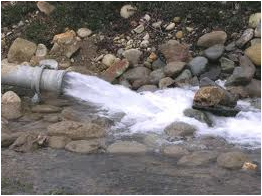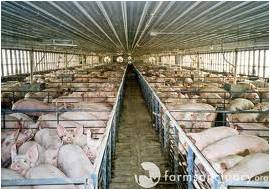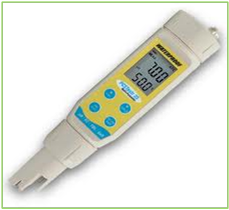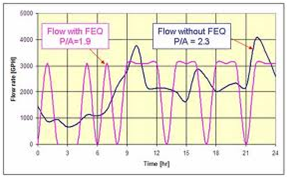Difference between revisions of "Practitioner's Tool / Source Characterization"
(Created page with "=== Hydraulic Loading === {| cellspacing="1" cellpadding="1" border="0" |- | rowspan="1" style="width: 976px; vertical-align: top" | Hydraulic loading refers to the volume...") |
|||
| Line 8: | Line 8: | ||
[[:File:Hydraulicdesignrates.pdf|Hydraulic Loading Guidance (.pdf)]] | [[:File:Hydraulicdesignrates.pdf|Hydraulic Loading Guidance (.pdf)]] | ||
| − | | style="width: 227px" | [[File:Source-Characterization 01.png | + | | style="width: 227px" | [[File:Source-Characterization 01.png|right|180px]] |
|} | |} | ||
| Line 20: | Line 20: | ||
[[Design_Flow_and_Loading_Determination_Guidelines_for_Wastewater_Treatment_Plants|Design Flow and Loading Guidance]] | [[Design_Flow_and_Loading_Determination_Guidelines_for_Wastewater_Treatment_Plants|Design Flow and Loading Guidance]] | ||
| − | | style="width: 227px" | [[File:Source-Characterization 02.png | + | | style="width: 227px" | [[File:Source-Characterization 02.png|right|180px]] |
|} | |} | ||
| Line 32: | Line 32: | ||
[http://www.susana.org/en/resources/library/details/2470 Grease Interceptor Sizing Tool (.xlsm)] | [http://www.susana.org/en/resources/library/details/2470 Grease Interceptor Sizing Tool (.xlsm)] | ||
| − | | style="width: 227px" | [[File:Source-Characterization 03.png | + | | style="width: 227px" | [[File:Source-Characterization 03.png|right|180px]] |
|} | |} | ||
| Line 39: | Line 39: | ||
{| cellspacing="1" cellpadding="1" border="0" | {| cellspacing="1" cellpadding="1" border="0" | ||
|- | |- | ||
| − | | rowspan="1" style="width: 976px; vertical-align: top" | Temperature, pH, presence of disinfectants like bleach, and various chemicals from commercial activities can have an impact upon wastewater treatment. Properly identifying these issues will help wastewater treatment plant designers determine which treatment devices will work best. As these issues are typically industry specific, contact trade groups or other industry professionals to get information on pretreatment technologies for your specific industry. You can also try to limit the amount of chemicals that go down the | + | | rowspan="1" style="width: 976px; vertical-align: top" | Temperature, pH, presence of disinfectants like bleach, and various chemicals from commercial activities can have an impact upon wastewater treatment. Properly identifying these issues will help wastewater treatment plant designers determine which treatment devices will work best. As these issues are typically industry specific, contact trade groups or other industry professionals to get information on pretreatment technologies for your specific industry. You can also try to limit the amount of chemicals that go down the drain and replace chemicals with less harmful substitutes. For example, a restaurant owner can replace dishwashers that use chemical disinfectants with dishwashers that disinfect with hot water. |
| − | | style="width: 227px" | [[File:Source-Characterization 04.png | + | | style="width: 227px" | [[File:Source-Characterization 04.png|right|180px]] |
|} | |} | ||
| Line 48: | Line 48: | ||
|- | |- | ||
| rowspan="1" style="width: 976px; vertical-align: top" | Wastewater flows tend to fluctuate based on time of day, day of the week and sometimes season. Understanding the fluctuations in flow can help designers address this issue through flow equalization devices or choosing technologies that can handle the variability. Most schools, for example, have typical average flows during school weekdays, low flow conditions on the weekends, peak flows during special events, and very low or no flow during summer vacation. Wastewater systems can be designed to withstand these fluctuations by installing flow equalization tanks or modules that can be turned on or off depending upon the anticipated loading. | | rowspan="1" style="width: 976px; vertical-align: top" | Wastewater flows tend to fluctuate based on time of day, day of the week and sometimes season. Understanding the fluctuations in flow can help designers address this issue through flow equalization devices or choosing technologies that can handle the variability. Most schools, for example, have typical average flows during school weekdays, low flow conditions on the weekends, peak flows during special events, and very low or no flow during summer vacation. Wastewater systems can be designed to withstand these fluctuations by installing flow equalization tanks or modules that can be turned on or off depending upon the anticipated loading. | ||
| − | | style="width: 227px" | [[File:Source-Characterization 05.png | + | | style="width: 227px" | [[File:Source-Characterization 05.png|right|180px]] |
|} | |} | ||
''[[Planning|Back to Planning Page]]''<br/> | ''[[Planning|Back to Planning Page]]''<br/> | ||
Revision as of 00:51, 2 September 2016
Contents
[hide]Hydraulic Loading
|
Hydraulic loading refers to the volume of wastewater per unit of time. Gallons, liters or cubic meters per day are common expressions of hydraulic loading. Estimate hydraulic loading from water meter readings, similar projects or standard values. The document linked below provides the minimum daily flow of sewage for many common facilities. |
Organic Loading
|
Organic loading refers to the amount of organic matter in the wastewater. Proper sizing of the treatment equipment requires accurate estimates of the organic loading. Use laboratory analysis or values from similar operations to estimate organic loading. |
Fats, Oil and Grease
|
Restaurants, commercial kitchens and food manufacturing facilities generate high concentrations of fats, oils and grease. Determine where grease traps and interceptors should be located based on facility layout. The tools linked below will help you determine the size and type of grease interceptor appropriate for your project. |
Temperature, pH and others
| Temperature, pH, presence of disinfectants like bleach, and various chemicals from commercial activities can have an impact upon wastewater treatment. Properly identifying these issues will help wastewater treatment plant designers determine which treatment devices will work best. As these issues are typically industry specific, contact trade groups or other industry professionals to get information on pretreatment technologies for your specific industry. You can also try to limit the amount of chemicals that go down the drain and replace chemicals with less harmful substitutes. For example, a restaurant owner can replace dishwashers that use chemical disinfectants with dishwashers that disinfect with hot water. |
Fluctuations of Flow
| Wastewater flows tend to fluctuate based on time of day, day of the week and sometimes season. Understanding the fluctuations in flow can help designers address this issue through flow equalization devices or choosing technologies that can handle the variability. Most schools, for example, have typical average flows during school weekdays, low flow conditions on the weekends, peak flows during special events, and very low or no flow during summer vacation. Wastewater systems can be designed to withstand these fluctuations by installing flow equalization tanks or modules that can be turned on or off depending upon the anticipated loading. |





